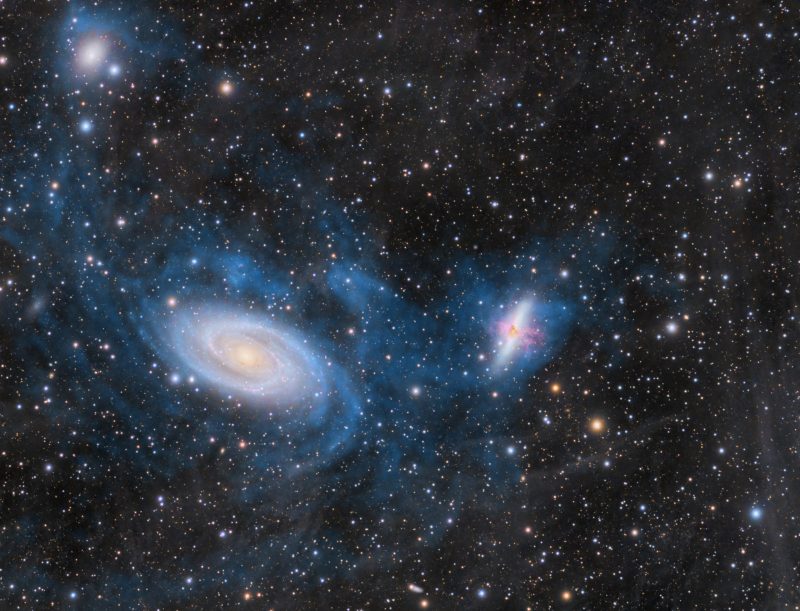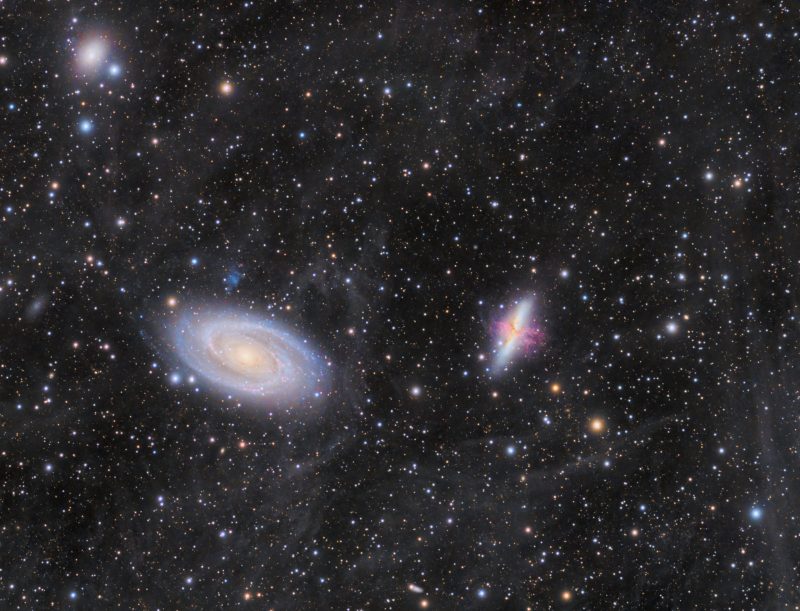
M81 and M82 in Ursa Major
M81 and M82 are two of the easier galaxies for beginning astronomers to find through small telescopes. The galaxies appear close together in our sky, and they’re near the famous Big Dipper asterism, in the constellation Ursa Major, the Greater Bear. Here, several veteran astrophotographers across three continents – Europe, North America and Oceania – have done something more. They combined data to create the beautiful images you see here. With more than 219 hours of exposures and 4,019 subframes – plus more than 62 hours of processing by William Ostling – the resulting images are breathtaking.
On the left is M81, nicknamed Bode’s Galaxy. The smaller galaxy on the right is called M82, aka the Cigar Galaxy. M82 is what’s known as a starburst galaxy. It has a rapid rate of star formation, thought to be driven by a close encounter with the larger galaxy. And M82 also has a superwind, a huge outflow of material likely driven by its rapidly forming stars. At the top corner of the image is another small starburst galaxy, known as NGC3077. These three galaxies are all approximately 12 million light-years away.
The many hours of exposure time of this image let astrophotographers capture fine detail between the galaxies. William Ostling said on this website:
All around the image is the galactic cirrus, dust lit by the glow of the Milky Way.
The image above also includes an overlay of HII emission, which helps you distinguish between the neutral gas of the galaxies’ interactions and the dust of the Milky Way. HII regions are areas of ionized hydrogen and indicate young, active, star-forming regions.
Another look
Here’s another look at M81 and M82 without the HII overlay. You can see a zoomable, annotated version of this image here. You can see more images and read more about M81 and M82 at William Ostling’s website.

Bottom line: Get a fresh look at galaxies M81 and M82 in Ursa Major. These incredible images combine more than 200 hours of exposure time, and more than 60 hours of processing, for a look at fine structures.
The post M81 and M82 as you’ve never seen them first appeared on EarthSky.
0 Commentaires